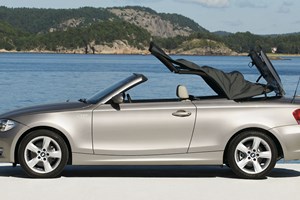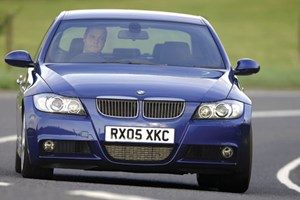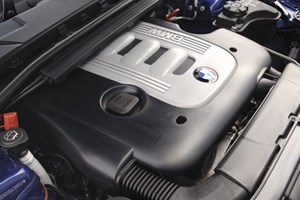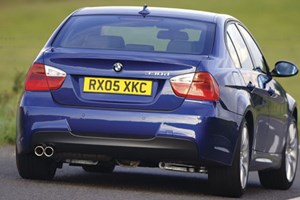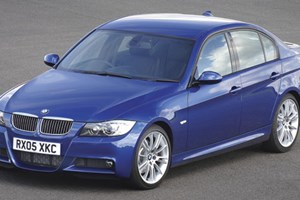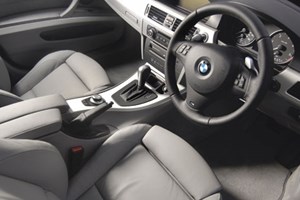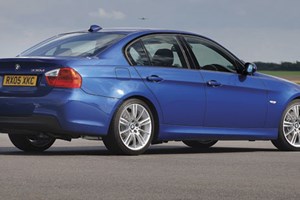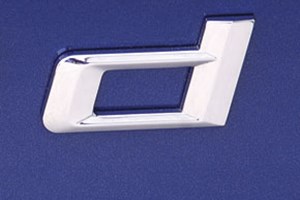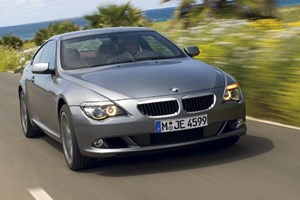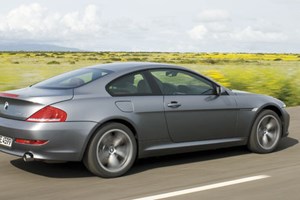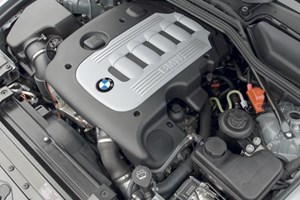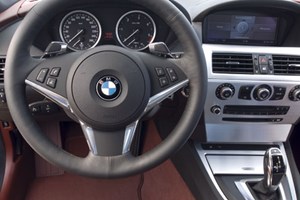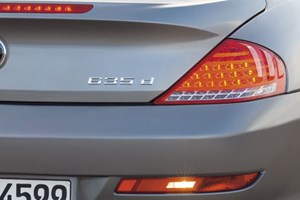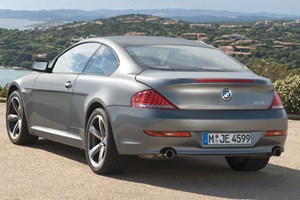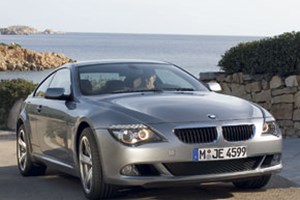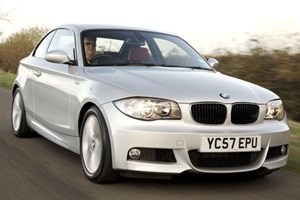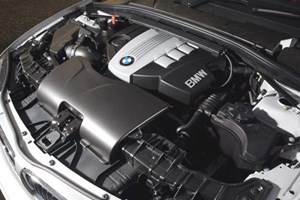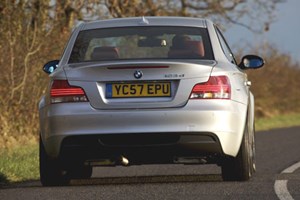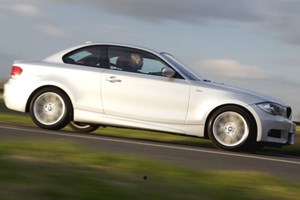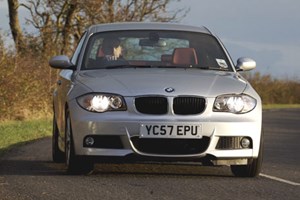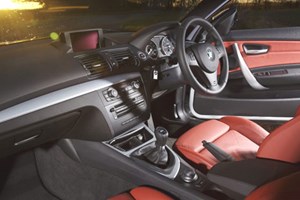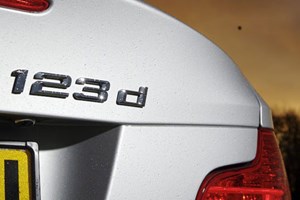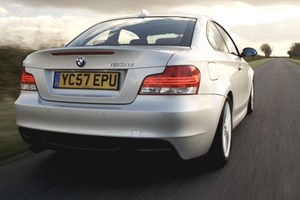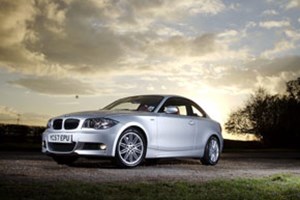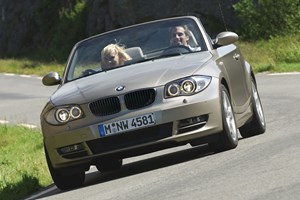
BMW 125i Convertible
| How much? | £26,195 |
|---|---|
| On sale in the UK: | April 2008 |
| Engine: | 2996cc 6-cyl, 218bhp @ 6100rpm, 199lb ft @ 2500-4250rpm |
| Transmission: | Six-speed manual, rear-wheel drive |
| Performance: | 6.8sec 0-62mph, 148mph, 34.9mpg, 195g/km CO2 |
| How heavy / made of? | 1585kg/steel |
| How big (length/width/height in mm)? | 4360/1748/1411 |
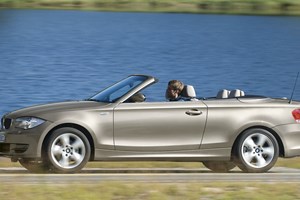
BMW teased us with the 1-series concept back in 2002. Remember the CS1, a stubby two-door drop-top, with flame surfacing fanning the flames of controversy? The BMW firewall, roasted by a million e-mails calling for Chris Bangle’s head, certainly does. It’s perhaps no coincidence that BMW has taken six years – six years! – to put that iteration into production. But, in April 2008, the 1-series range will, four years after launch, finally be complete. And the glaring gap in the range, now the 3-series drop-top has moved upmarket, will be filled.
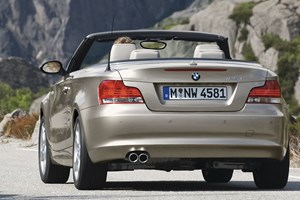
I see it hasn’t got a folding hard-top roof...
No, thank goodness. Have you seen the rear end of a Peugeot 307 CC? Brit designer Kevin Rice was determined to avoid the ‘wedge’ so many coupe-convertibles are afflicted with (mental image: baboon's bottom). The only way to achieve this was with a compactly folding fabric roof, he says.
Rice’s work has created the most pleasing 1-series of all, with a roof-down elegance echoing the clean-cut lines of the ‘80s E30 3-series. Even the rear end is tidier than the coupe upon which it’s based; apparently, the aero of the fabric roof is better than the coupe’s hard-top, meaning less need for downforce-generating bootlid addenda.
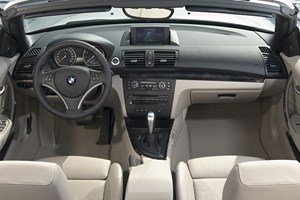
What about when you lower the roof?
BMW admits 22 seconds isn’t the fastest roof-down time – but you can do it on the move, if you keep below 25mph. 'We looked at a Z4-style arrangement, with no cover, but it was a bit too rough and ready,' says Rice. Unlike the roof itself which is thick and taut to reduce interference from the internal ‘skeleton’ bars. It's even available in black with silver weave. Looks better than it sounds.
It’s pretty blustery if you don’t fit the wind deflector, but with it in place, things are much more refined, and cosy too, courtesy of climate control that reprofiles roof-down. Things are gloomy roof-up (check out the thickness of the C-pillars) but, thanks to forward-set A-pillars, it's light and airy when motoring al fresco. Otherwise, the plain, quality 1-series dash is unchanged.
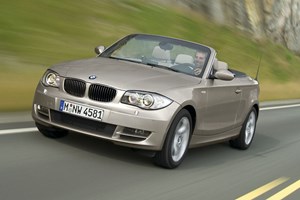
But is that £22k starter price decent value?
It's not too pricey compared with rivals, but do you really fancy a 2.0-litre petrol four-pot for that dosh? That'll be the best seller and the diesel models will do nicely, but BMW launched it in costly 125i guise, boasting a 218bhp 3.0-litre straight six with – luckily, given how a lack of fireworks at low revs demands you to spin it – an engine note to worship.
Aural treats rarely reach such highs for £26k, and almost never return 34.9mpg combined. The 135i Convertible certainly doesn’t; instead, it uses 306bhp to shoot from 0 to 62mph in 5.6sec. That’s only a third of a second down on an M3 V8 Convertible. For £31k, not £54k.
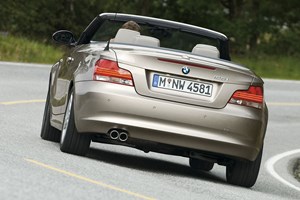
It’s the only rear-driver in its class. Has BMW’s suspension bias put my fillings at risk?
Far from it. The ride is deliciously supple, proving with aplomb that not all 1-series dampers have been injected with quick-set Polyfilla. What’s more, BMW forums the world over risk grinding to a halt with the news that runflats, far from detracting from the car, actually add to its repertoire. The lag-free steering response and accuracy their stiff sidewalls provide make the One an extremely biddable, fluidly predictable machine despite this newfound leniency over bumps. Dynamic, entertaining and compliant? Who’d have thought it? Only a willingness to fall into understeer on glassy Spanish roads nags.
It’s not burdened by scuttle shake, either. Mind you, it does weigh 1585kg – 120kg heavier than the coupe and the same, unbelievably, as a 5-series. And that scares us a little bit.
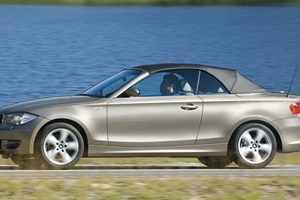
Verdict
The 1-series improves with every derivative, and this is probably the most satisfying of all. Not everyone likes it, we grant you, but it looks good to our eyes, particularly roof-down where the 1-series’ various cues, all defined by that shoulder line, finally merge to form a cohesive whole. Now we’re used to it, maybe it wasn’t a coincidence that the CS1 was a convertible…
In 125i guise it's very fast indeed, and the best car to drive in a class that includes the talented VW Eos, Volvo C70 and Audi A3 Cabriolet. A drop-top that hasn’t dropped the ball.
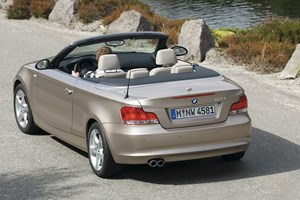
CAR's rating
Handling
Performance
Usability
Feelgood factor
Readers' rating




